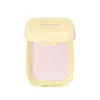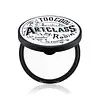COLORGRAM Sebum Retouching Blur Pact Versus Too Cool For School Artclass By Rodin Finish Setting Pact
What's inside
What's inside
 Key Ingredients
Key Ingredients

 Benefits
Benefits

 Concerns
Concerns

 Ingredients Side-by-side
Ingredients Side-by-side

Talc
AbrasiveMethyl Methacrylate Crosspolymer
Silica
AbrasiveMagnesium Dna
Skin ConditioningPotassium PCA
HumectantSilicon
AbrasiveSodium Fluoride
Potassium Hydroxide
BufferingTin Oxide
AbrasiveDimethicone
EmollientCaprylic/Capric Triglyceride
MaskingTitanium Dioxide
Cosmetic ColorantNylon-12
Diisostearyl Malate
EmollientMagnesium Myristate
Hexyl Laurate
EmollientDimethiconol Stearate
EmollientAluminum Myristate
Emulsion StabilisingGlyceryl Caprylate
EmollientHydrogen Dimethicone
CI 15850
Cosmetic ColorantCI 19140
Cosmetic ColorantTalc, Methyl Methacrylate Crosspolymer, Silica, Magnesium Dna, Potassium PCA, Silicon, Sodium Fluoride, Potassium Hydroxide, Tin Oxide, Dimethicone, Caprylic/Capric Triglyceride, Titanium Dioxide, Nylon-12, Diisostearyl Malate, Magnesium Myristate, Hexyl Laurate, Dimethiconol Stearate, Aluminum Myristate, Glyceryl Caprylate, Hydrogen Dimethicone, CI 15850, CI 19140
Ingredients Explained
These ingredients are found in both products.
Ingredients higher up in an ingredient list are typically present in a larger amount.
Hydrogen Dimethicone is a type of silicone.
Nylon-12 is a polymer. It is derived from 12-aminododecanoic acid, an omega-amino fatty acid
According to a manufacturer, it is a talc substitute. Like talc, nylon-12 gives products a satin feel. The manufacturer also claims this ingredients does not block pores and has moderate oil absorption.
This ingredient may not be reef-safe.
Learn more about Nylon-12Silica, also known as silicon dioxide, is a naturally occurring mineral. It is used as a fine, spherical, and porous powder in cosmetics.
Though it has exfoliant properties, the function of silica varies depending on the product.
The unique structure of silica enhances the spreadability and adds smoothness, making it a great texture enhancer.
It is also used as an active carrier, emulsifier, and mattifier due to its ability to absorb excess oil.
In some products, tiny microneedles called spicules are made from silica or hydrolyzed sponge. When you rub them in, they lightly polish away dead skin layers and enhance the penetration of active ingredients.
Learn more about SilicaTin Oxide is an inorganic oxide used to add opacity and volume to a product. In nature, it is already found in mineral form. The main ore of tin is an opaque and shiny mineral called casseterite.
Tin Oxide helps remove translucency in a product, or make it more opaque. Besides adding opacity, tin oxide is used for bulking to add volume.